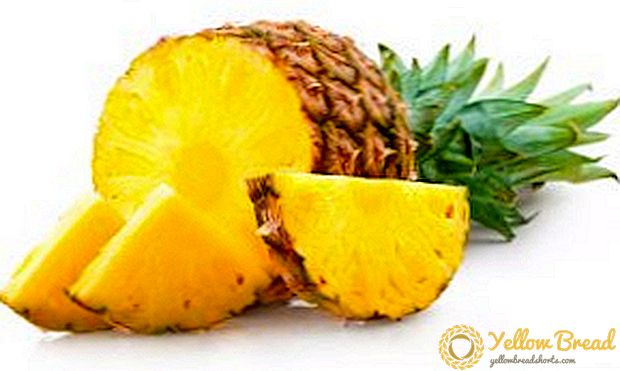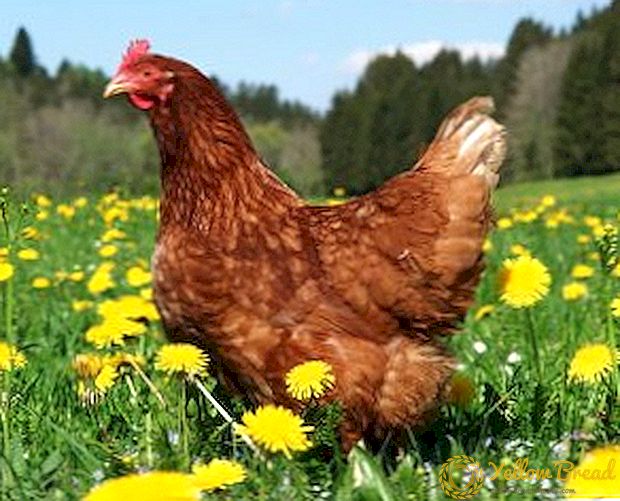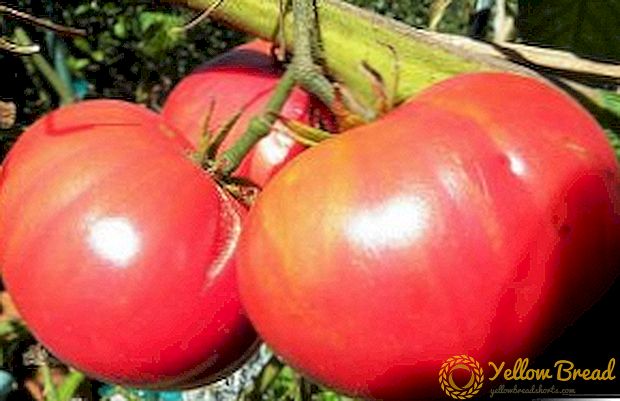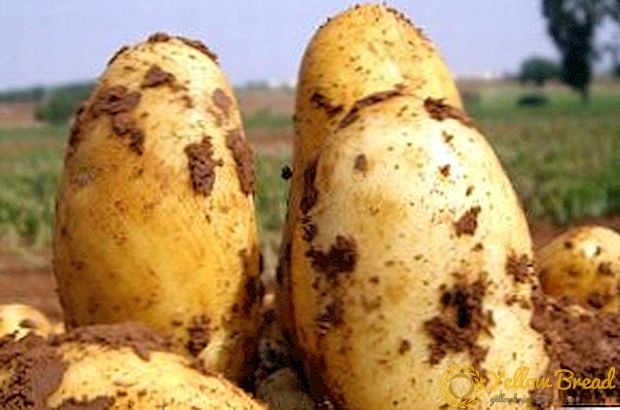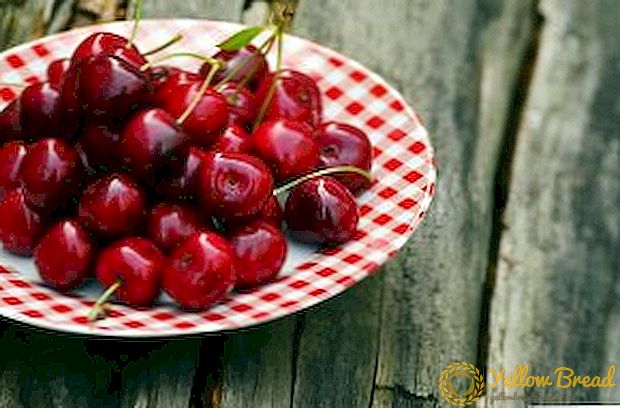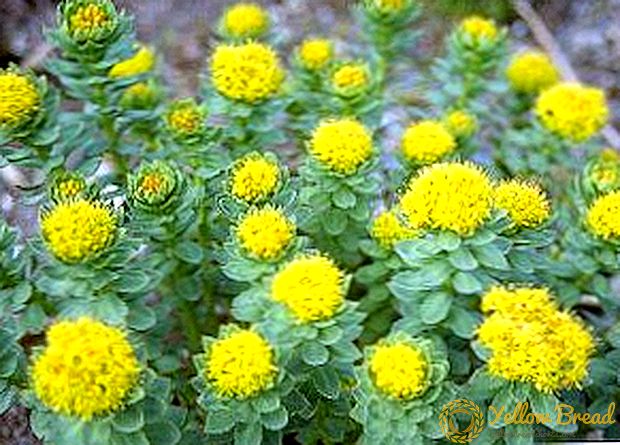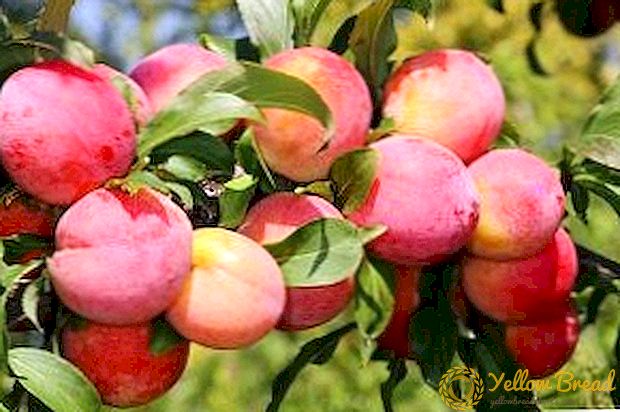
All varieties of plums can be divided into two types: those that are capable of self-pollination, and those that are pollinated from other varieties.
There are much more advantages in samobzplednyh varieties, because they are able to bring much greater yields. And among the samobzplodnyh varieties are more common large fruits.
But still, it is much easier to grow and care for self-bearing plums, which we will tell about.
- Self-fertile plums - varieties and their features
- Plum variety "Oryol Dream"
- Plum variety "Red Ball"
- Plum variety "Memory of Timiryazev": description
- Plum "Yellow Self-fertile": description
- Features care for self-fruited plum
- Plum pruning tips
- Fertilizer samoplodnyh varieties
- About watering plums
- Cooking plum for the winter
- Planting requirements for described plum varieties
- About the landing time
Self-fertile plums - varieties and their features
In fact, varieties of self-propelled plums are not so, and a great many. Also, to choose among them those varieties that would be well and qualitatively fruitful, when searching the Internet was difficult, but still managed to find them.
After all for samoplodnoy plums do not need to plant in the garden pollinator tree, its growing season runs independently and independently and can produce very good yields. In addition, the fruits of these plums are universal in application, and among them you can find both blue and yellow varieties.
Plum variety "Oryol Dream"

This variety was bred and distributed not too long ago, just 10 years ago. Parent "Orlovskaya Dreams" can be called a sort of plum "Annushka", from the freely dusty seedlings of which were selected the first seedlings of the specified plums.
Distinctive features of the fruit
The fruits of this variety are large. Their average weight is 40-43 grams. In shape, they are rounded. The height of the fruit on average is 44 millimeters. The fruit also has a narrow and deep funnel. By color, the fruits are red with a lot of subcutaneous points, which makes them particularly attractive. By the way, according to the results of expert evaluation, the fruits of this variety received an estimate of 4.5 out of 5 for appearance.
The flesh of the fruit is yellow, medium in density with a large number of fibers. The juice content in the pulp is high. A distinctive feature of this variety is that the juice of its pulp is absolutely colorless.
The stone in the fruit is small, however, it is very poorly separated from the pulp. Fruit pulp contains about 10.3% of sugars and only 1.1% of acids, which makes their taste balanced. Tasters taste fresh fruits rated at 4.4. The main purpose of the plums is table.
Terms of ripening fruits of plum "Orlovskaya Dream" early, approximately at the beginning of August.
What are the features of the tree?
The tree in the variety "Orlovskaya Dream" is not distinguished by its large size. The power of growth is its average - fructifying adult. tree as much as possible reaches only 2.5 meters. The crown of a tree is pyramid in shape. The branches of the crown are spreading and slightly raised.
Because of the small number of branches and branches, the crown of the Orlovskaya Mechta plum tree is medium thickened. The bark has a brown color, smooth on the branches and on the trunk. Young shoots are usually straight, brown-brown color. The fruitful parts of the tree are the bouquet twigs.
The tree begins to bear fruit three years after planting. In the period of flowering, the tree enters approximately in the middle of May, in 11-18 numbers.
Yield wood considered average. On average, about 99.2 centners of fruit are harvested per hectare.The maximum yield per hectare is 119.8 centners. Naturally, this variety is self-fertile.
About the pros of the variety
Winter hardiness of this variety is very high, besides not only wood, but also its buds. This greatly simplifies the preparation for the winter and allows not particularly worried through the spring frosts.
Also tree bears fruit big amount large fruits. In addition, the fruits have a very beautiful color and quality. Klyasterosporiozom plum is almost not terrible. In combination with the fact that the tree bears fruit early and has very convenient care sizes, the Orlovskaya Mechta variety can in fact be called one of the best self-fertile plum varieties.
Now about the minuses of the variety
Unfortunately, but because of the abundant yield of a tree, the size of its fruits often decreases greatly. Thus, in spite of the large number of plums, their total weight will hardly differ from the weight of the crop, which could have been obtained with a smaller number of fruits.
Plum variety "Red Ball"

Another self-fertile plum variety that has very tasty and rather large fruits. It was obtained by breeding.To do this, Russian scientists crossed the variety "Burbank", which is a Sino-American variety of plums, and the Ussuriyskaya Krasnaya plum. We now turn to the description of the plum "Red Ball".
Distinctive features of the fruit
This variety also boasts its large fruits. Their weight equal on average 35-40 grams. Ripe plums have a rounded shape. The color of the peel is the same red as the fruit of the Orlovskaya Dreams plum variety. The peel is dense, has a waxy bloom of gray color.
The flesh of the fruit is light yellow. According to the structure, it is very loose, with a characteristic fibrousness. The pulp also contains a large amount of juice, which well complements its sweet taste.
The fruit is characterized by a very pleasant aroma. Tasting taste evaluation plum "Red Ball" - 4 points of 5. The stone in the fruit is not large, it is difficult to separate from the pulp. Most often fruits are used for table use.
Fruits ripen early. The optimal time for harvesting is the beginning of August.
About tree varieties "Red Ball"
By its size, the tree is able to reach only the average height, which is 2.5 meters.The shape of the crown in a tree of this variety has a round-hanging crown. There are not many branches, because of which the crown is medium thick.
Fruiting at grade plentifulthat allows you to get good yields of plums. The fruits are formed on the bouquet branches and on the shoots formed a year ago.
Fruiting in a tree of this variety begins very early, as early as 2-3 years after planting.
What are the advantages of this variety
The virtue of the variety lies in the large size of its fruits and their high external quality. It is worth noting that ripe plums, due to their rather dense skins, can be transported over fairly long distances.
In addition, the variety quickly becomes fruiting, fruit him ripen very early and it does not require dusting with other varieties. The tree and its fruit buds tolerate low temperatures, are not afraid of frost, which can suddenly hit in the spring. The high resistance of this variety to clautrosporia is noted.
But there are also disadvantages
The taste qualities of the fruits of this variety are slightly inferior to many others, which is why the “Red Ball” variety can be called an amateur plum.
Plum variety "Memory of Timiryazev": description

This variety of self-fruited plum is considered one of the most famous and common. It was bred in the middle of the last century, by selectively crossing a plum "Victoria" with such a variety as "Redhead Red".
The most common in the Central and Middle Volga territory of Russia.
Distinctive features of the fruit
Fruits are of medium size, on average, their weight is only 22 grams. The form of plums of this variety is oval. The abdominal suture is almost invisible.
Painted they basically in redbut have also red barrels, which is formed under the influence of the sun. Also, the fruits are characteristic a large number of subcutaneous pointswhich are also painted red. The peel is covered with a slight layer of wax.
The flesh of the fruit is yellow, the structure is fine-grained and very dense. The juice content in the fruit is average. Also, at an average level is the sugar content (9.3%) in the pulp of plums and the degree of manifestation of their flavor. 100 grams of pulp contains 11 mg of vitamin C.The taste is rated by tasters by 4.2 points out of 5.
In terms of ripening, the variety should be attributed to the late ones, since the removable ripeness of fruits occurs only in the last days of August - the first days of September.
Timiryazev Memorial Tree
The tree in adulthood reaches medium size, which is very convenient when taking care of it. The krone has a rounded and bushy shape. Due to the small number of main branches, the crown is thickened to a moderate degree.
Degree of foliage also average. Shoots are light brown in color, down to the bottom. Fruiting is mainly formed on the bouquet branches and annual shoots.
Blossom tree starts around May 12-22. The first yields are given only on the 4th year after planting.
The tree is considered durable and able to bear fruit to 21 years.
It is important to note that despite the fact that the tree is self-bearing, its yield is above average. About 9 kilograms are collected from one tree in one season. Sometimes periodic yields may appear, but on 16 years of fruiting, on average, it appears only 5 times.
Advantages of this plum variety
Fruit Plum varieties "Memory of Timiryazev" large and very high quality. Have a good appearance. Fruits are well to be transported. Can be used by all possible types of destination plums.
The tree is self-fertile and capable of very fast regeneration, which allows frequent pruning of the branches to increase the size of the fruit. Such diseases as klyasterosporiosis and fruit rot, the variety is practically not affected. Good for intensive gardening.
Now for the cons
The variety is very afraid of low temperatures. Particularly affected by frost shoots. The branches and flower buds of a tree are affected by frost in a moderate degree. Also in the middle the tree is drought tolerant. It is strongly affected by ticks if the tree is not treated on time and regularly with special preparations.
Plum "Yellow Self-fertile": description

Samoplodny plum variety, the origin of which is not known. Very widely distributed and known for the taste of the fruit.
Distinctive features of the fruit
In this variety, fruits are of medium size. Their weight ranges from 20 to 30 grams. They are round in shape. The skin of ripe plums is dense, with a characteristic wax coating. Fruits are yellow in color.
The pulp of the fruit of removable maturity has a light yellow color. By structure, it is very dense, the juice content is average. ATgood quality. Also characterized by a pleasant delicate flavor that can cause appetite. It is widely used both in fresh form and in processing into jams, jams and compotes.
The term of ripening fruits is medium, removable maturity begins in mid-August.
A little bit about the tree
The tree of this variety grows very large, although the size of the crown is medium. Crown thickening is average. The main branches depart from the trunk at an acute angle, in type they are skeletal.
Shoots are brown, straight and slightly dipped. Fruiting concentrates mainly on the bouquet branches.
Sort "Yellow Self-Fertile" considered high-yieldingwhat contribute to the large size of the tree.
Advantages of the variety "Yellow Samoplodnaya"
The advantage of the variety are its beautiful yellow fruits of good taste and universal purpose. The density of the skin provides them with high suitability for transportation. Tree varieties "Yellow Samoplodnaya" has a high resistance to low temperatures.
The disadvantages of this class
The main disadvantage is the large size of the tree, which greatly complicates the care and harvesting. In addition, the tree takes up a lot of garden space.
Features care for self-fruited plum
Plum pruning tips

Medium and tall varieties of plums, although they need pruning, should not be regular. With direct landing tree shoots shorten by 1-2 buds. The main conductor can be shortened to 30 centimeters (depending on the size of the seedling).
The crown of an annual tree should also be trimmed to form its correct crown. Among all plum branches, you need to choose the strongest and form 3-4 tiers of them, 2-6 branches in each tier (the largest number of branches should be in the lower tier, and the least in the top tier).
The remaining branches are also cut off, but this is done in such a way that the lowest branches are the longest, and the top ones the shortest. But the longest should be the conductor.
Further pruning is aimed at removing the damaged and dried branches, stimulating the growth of the fruit and to maintain the excess length of the conductor.
Fertilizer samoplodnyh varieties
Plum fertilizers of these varieties are not demanding. Feeding should be carried out at intervals of 2-4 years, using for this purpose both organic, and mineral fertilizers. Mineral fertilizers, such as superphosphates and potassium, are applied to the soil in the form of irrigation.
About watering plums
But watering plums is constantly and regularly, because they are very fond of wet earth. Watering is carried out throughout the growing season, once a month. However, in case of severe droughts, watering should be done up to 2-3 times per month. Requires watering the tree, even in September, to stock up on the necessary substances for the winter well.
Cooking plum for the winter
Even despite the high resistance of many varieties before the winter frosts, in winter, a tree trunk should be covered with a large layer of snow and cover it with hay on top. This will not only provide protection against frostbite, but also against various rodents.
Young seedlings can generally bend down to the ground and dripping with snow. It is recommended to tie the branches of a young tree for the winter together, with one broom.
Planting requirements for described plum varieties
A place to land is to choose a windless, so as not to stagnate cold air flow.
This should be taken into account when laying a garden, making a distance between medium and tall trees from 2.5 to 3.5 meters. The space between the rows should be about 4 meters.
Pit for landing gets ready in 2-3 weeks. Its depth should be about 60 centimeters so that a mixture of soil and organic fertilizers can be placed on the bottom (we fall asleep while digging a hole so that this soil has time to settle before planting).
We lower the seedling into the pit so that its root collar remains 5-7 cm above the soil surface. Next, we fill the sapling with soil without adding any fertilizers (it is also recommended to pour a not very thick layer of soil without fertilizers under the sapling).
The soil should be very well compacted so that there is no air left near the roots, otherwise it can dry the roots. Sapling abundantly water. Repeat watering should be another 2 weeks.
About the landing time
The best time to plant a plum is spring, since during autumn planting there is a high probability that the seedling will freeze. In the spring, after 3-5 days after the snow has thawed, a plum seedling is planted.It is best to plant an annual sapling, as it takes root faster.

